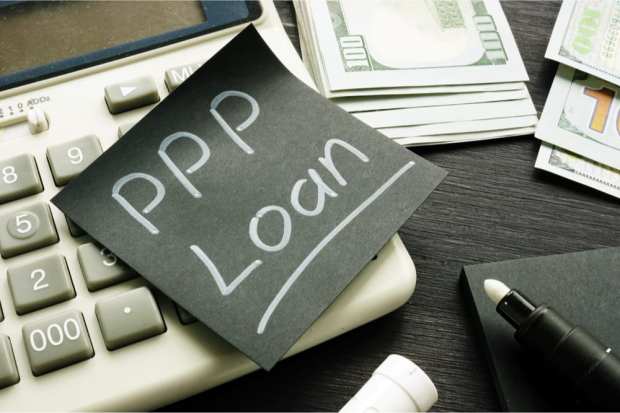Why SMBs Are Suddenly Reluctant To Apply For The SBA’s PPP Loan Program

The Paycheck Protection Program (PPP) is going back to court, this time over the new guidance handed out by the federal government on April 29 that was intended to inject clarity into the program but seems more likely to be on the verge of injecting a lot more confusion.
So what happened?
The trouble goes back to when the program opened its doors on April 3, with businesses under 500 employees strongly encouraged to apply for the loans as long as they could meet two conditions. The first is that they had been in business before Jan. 31, 2020. The second was that the majority of those funds had to go toward paying employee payroll. If those two qualifying conditions could be met, small and medium-sized business (SMB) owners would not only receive loans, but qualify to have them forgiven.
To say the program was popular really doesn’t do justice to the onslaught of applicants that besieged, and ultimately crashed, the system on the day it rolled out. Interest in the program was clearly much greater than Congress had forecast. Between technical glitches and lingering confusion on the part of banks over the rules of the program, the initial rollout was so bumpy that U.S. Treasury Secretary Steve Mnuchin had to publicly reiterate a promise he had made with the program’s roll out: everyone who needed funds would ultimately get them.
“I want to assure all small businesses out there: We will not run out of money,” he told CNBC five days into the PPP rollout. “If you don’t get a loan this week, you’ll get a loan next week or the following week. The money will be there.”
And, ultimately the money was there. Though the PPP fund utterly exhausted the initial $350 billion Congress appropriated within 13 days, by April 27 an additional $310 billion was made available to SMBs. And though the second round started out looking quite a bit like the first one, with a tsunami of applicants looking for funding, on April 29 the Treasury Department offered up new guidance that managed to overnight chill interest among new applicants. And it left many others looking at the funds they had already been approved for and wondering if they should hand them back.
According to the Treasury’s new guidance, the government will now potentially audit all PPP loans, with a special interest and attention to firms that took loans for more than $2 million to see if they really “needed” the money. But what “really needing” the money means, a recent PYMNTS panel conversation on the subject revealed, is far from clearly defined.
Having access to a credit line, having investors with deep pockets who could have floated some funds a firm’s way, not being absolutely cash strapped at the time the loan was applied for — those all could be reasons a loan might be ruled invalid. And being found as an inappropriate recipient isn’t as simple as just giving the money back unless firms do it before a May 14 deadline. The Treasury notes that firms that do not give back funds that they are later found to not be entitled to could face criminal investigations, prosecution and even jail time.
And that rather big change in the program’s rules is what has tipped off a lawsuit filed by California software firm Zumasys Inc. against the Treasury and the U.S. Small Business Administration (SBA).
Zumasys argues it is sure it is entitled to its $750,000 loan it received under the original terms as described, but is totally unsure if it qualified under the nebulously defined new terms offered up by the federal government 16 days after the program launched. The company also noted that it’s in no position to return the money because the firm has already done what the original instructions told it to do. It paid the money to 70 employees to keep them on the payroll.
Without these funds, Zumasys noted, it would have had to terminate the workers. The firm is are asking a judge to cancel the latter directive and prevent the government from enforcing it.
Failing that objection, the attorney representing Zumasys, Mona Hanna of Michelman & Robinson, noted Zumasys would at least like to get some clarity on the legality of changing program requirements after loans had been disbursed.
“That’s why we filed this lawsuit,” she said. “We want the court to tell us whether or not this guidance, given by the SBA and Treasury, is valid, or is it in fact invalid and unenforceable. We need to know.”
And, Zumasys is far from the only SMB out there that falls into that “need-to-know” category. While some of the early applicants are nearly universally agreed to have be mistaken in moving on the funds — the Los Angeles Lakers spring to mind — there is a fairly deep tranche of larger SMBs with hundreds of employees that are truly feeling trapped. Do they return the money and go ahead with layoffs or keep people on the payroll and risk a ruinous federal investigation down the line?
It injects yet more uncertainty into a PPP program that has already been wracked with issues thus far — enough that the cohort of SMBs PYMNTS spoke to were already deeply ambivalent about tapping into the relief funds before the qualification requirement issues came to the forefront. There was already a sharp decline in the share of SMB owners applying for loans between early and late April — with 32.7 percent doing so by April 6, but just 25.2 percent doing so by April 20.
Moreover, our data showed that by and large, the main reason for taking out the loan was to do what the loan’s name implied it should be used for. Our research shows that 44.6 percent of SMB owners who applied for PPP loans did so to keep their employees and reopen their businesses, while 24.9 percent needed the additional funding to survive the pandemic. Another 24.9 percent did so because they sought an added cash cushion, while a scant 4 percent reported taking the funds as a precaution against needing them down the line.
But perhaps most notable to the currently unfolding drama is just how many business owners have stayed away from applying for the PPP loans because they’re genuinely unsure of what they would be getting into. Our research shows that 29.6 percent of SMB owners who didn’t apply for PPP loans listed concerns about incurring debt as a reason they did not do so. The second leading reason, with 17.3 percent of SMBs reporting it, was not understanding enough about PPP loans to feel comfortable filing for one. Rounding out the top three were the 15.8 percent who said the main reason they didn’t file was because they were unsure whether they would have to repay the loans.
This survey was taken a full week before the midstream guideline update came out. We imagine if we took that survey again today, all of those figures would be much higher.
A reality in fact, reflected that as of Friday (May 8) there is still money left in the PPP fund – money that hasn’t yet been claimed for loans. We suspect that’s because firms that were somewhat unsure a few weeks ago about applying are now very unsure. And with everything else going on, they’re not too enthusiastic about adding another risk to their already overflowing plate.
And if SMBs start returning their loans en masse rather than taking the risk of ending up in jail for making a mistake? Well, the next big PPP drama might not be how the government is going to come up with enough money so much as it will be about how the federal government will convince SMBs to take the hundreds of millions of dollars it suddenly finds itself unable to give away.
